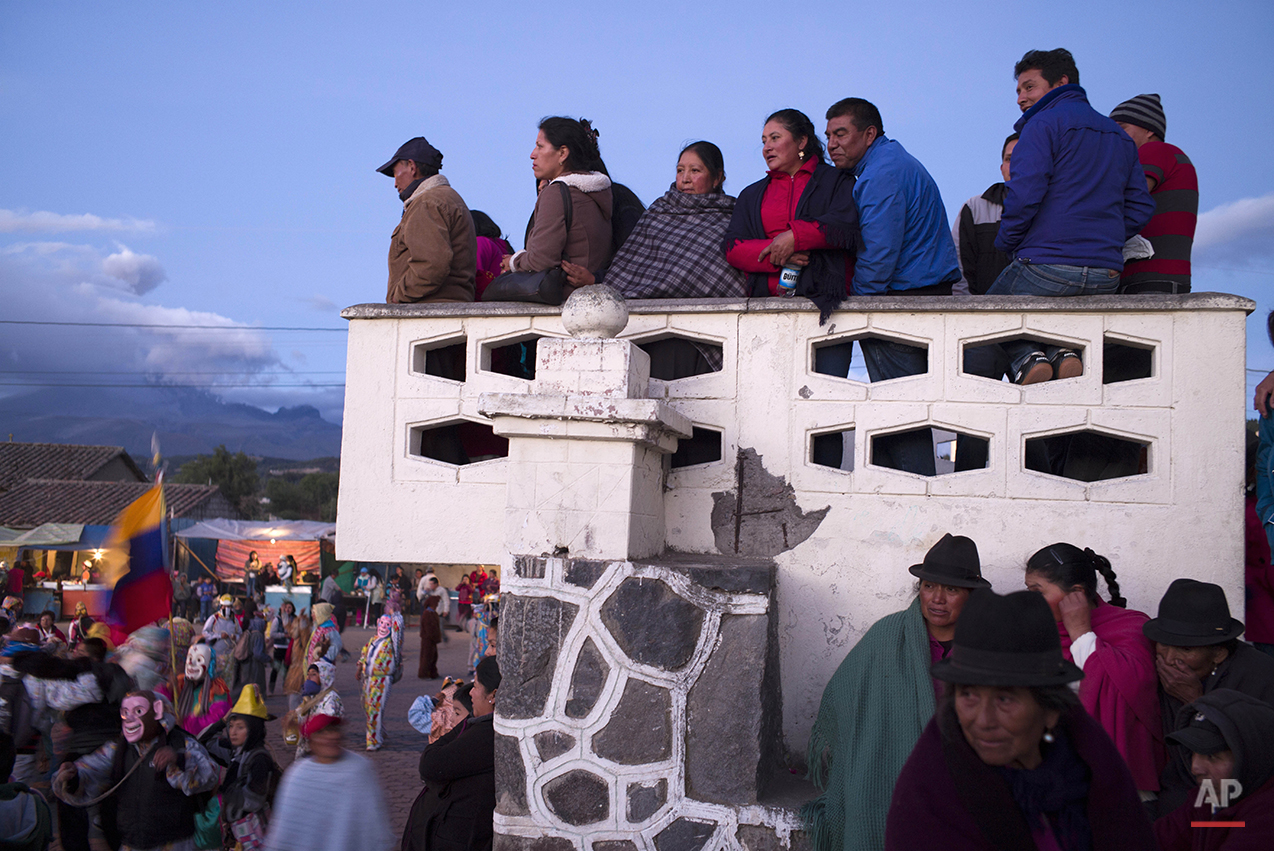Deeply rooted on a volcano's flank

Tears roll over Maria Rosa Mendoza's cheeks as she turns away from Cotopaxi.
The 5,897-meter (more than 19,000-foot) volcano has cast itself over her entire life.
The water she drinks falls from its glaciers. Her cows graze in the pastures on its slopes. To her children, she tells handed-down tales of its killer 1877 eruption. She sings a local hymn that praises its fearsome majesty.
Mendoza, 42, has returned home beneath the Earth's second-highest volcano with her husband to collect belongings and sweep the ash from their house. It is in easy reach of calamity should Cotopaxi blow.
On Aug. 15, when the volcano rumbled back to life, ash billowing from Cotopaxi penetrated her simple brick and concrete home and nearly asphyxiated her seven children.
The family left that day, moving to safer ground where her brother-in-law offered them rooms. Mendoza's 9-year-old, Angelito, asks daily if they can go home. They all want to. But the uncertainty keeps them away.
The volcano has been spewing ash and steam and, on a few occasions, a small amount of molten rock for a month. Scientists say there is no imminent threat of a major eruption and the government has declared a yellow alert, the lowest kind. It means everyone potentially at risk should have evacuation plans.
Some 300,000 people live in the potential path of the lahars — fast-moving flows of splintered rock and mud that are the principal danger of such a snow-capped volcano.
Cotopaxi is considered among the world's most dangerous volcanoes because of its proximity to a major city — Quito, Ecuador's capital, is just 50 kilometers (a little more than 30 miles) away. People here literally live atop the solidified lahar flows that buried hundreds alive in 1877.
Mendoza and her husband have moved the family's 12 cows to a relative's land farther from the volcano. Their pastures are smothered by ash.
Sales of the cows' milk, she says, have given the couple income enough to provide for their children, ages 3 to 20. The minimum wage of $354 a month that she earns working at a rose plantation and the same amount that her husband is paid at a sawmill simply doesn't suffice.
Mendoza's life, although now upended, is deeply rooted in these rich, volcanic soils and she yearns to remain though reason would dictate she should leave.
Living beneath a volcano has its contradictions.
"To be at peace," says Mendoza, "I want to see the eruption."
Text from the AP news story, AP PHOTOS: Deeply Rooted on a Volcano's Flank, by Cris Toala Olivares.
Follow Cris Toala Olivares: Twitter | Instagram
Spotlight is the blog of AP Images, the world’s largest collection of historical and contemporary photos. AP Images provides instant access to AP’s iconic photos and adds new content every minute of every day from every corner of the world, making it an essential source of photos and graphics for professional image buyers and commercial customers. Whether your needs are for editorial, commercial, or personal use, AP Images has the content and the expert sales team to fulfill your image requirements. Visit apimages.com to learn more.
Written content on this site is not created by the editorial department of AP, unless otherwise noted.
AP Images on Twitter | AP Images on Facebook | AP Images on Instagram





















